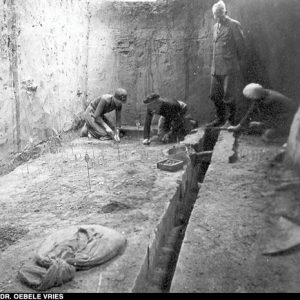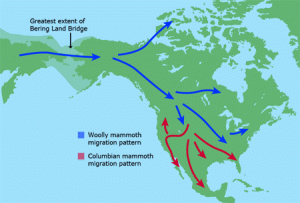Everything the Nazis did can be attributed to them trying to prove that the Aryan race existed. To convince the educated and to further authenticity, party leaders actively targeted other educated people to provide this evidence. Thus, a variety of scholarly fields such as archaeology were turned into a source of informational aid to benefit Nazi ideologies.
Tenants of Nazi Archaeology
The Nazi researchers conducted all of their work under a certain nationalistic framework. They referred to the framework as the Five Tenants. The tenants are as follows:
- Kulturkreise (culture circles), which states that recognition of an ethnic region only comes from the materials excavated at the site.
- The social diffusion theory, which states that ideas are spread from the most advanced culture to the least advanced culture.
- Deutsche Reinheit (the pure German man), which states that Germans were “pure Aryans.”
- Weltanschauungswissenschaften (world view sciences), which says that culture and science are one and they carry race-inherent values.
- Secrecy. The last tenant was secrecy because these ideas were never formally released to the public.
Hitler’s Archaeologists
The elite Nazi research group that upheld the five tenants was formed in 1935, before the major outbreak of World War II. Led by Gestapo and SS officer Heinrich Himmler, the Ahnenerbe was designed with the goal of unearthing new evidence of the accomplishments of the great Germanic ancestors. The name Ahnenerbe roughly translates to “something inherited from the forefathers”. As evident from just the name, the archaeologists were working under extreme nationalistic ideas. This nationalism led to extremely far-fetched historical conclusions. For example, the young researcher Assien Bohmers claimed he could trace Nordic origins all the way back to the Paleolithic era in Germany. When combined with the ideas of Kulturkreise and social diffusion, this would objectively name German Aryans as the dominant culture and entitle them to huge portions of already owned land.
Battling Nationalistic Archaeology
The construction of a national past should not be made at the expense of abandoning the knowledge of our shared past. A national past should also not be simply created for the purpose of future goals; all cultures and traditions should be recognized as a worthy study. The Ahnenerbe twisted their research in order to twist the history of Germany so the Nazis could have justified actions. If archaeologists today can move forward while trying to free their research from any social theories built into a society (such as the five tenants), then the history will be reported accurately and honestly. It is up to archaeologists today to respect the past in order to respect the future.
Other Readings
- http://anthropology.msu.edu/anp203h-ss14/2014/04/01/nazi-archaeology/
- https://www.jstor.org/stable/pdf/2802176.pdf




